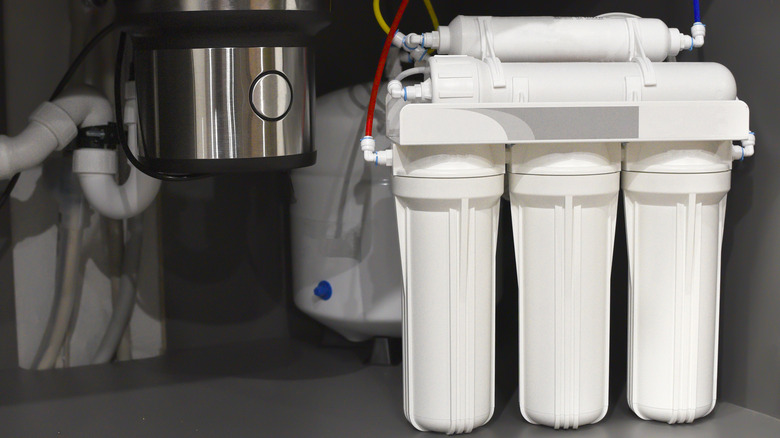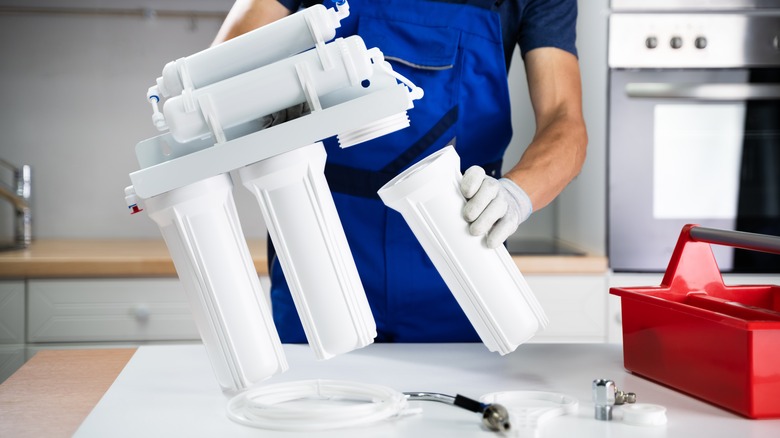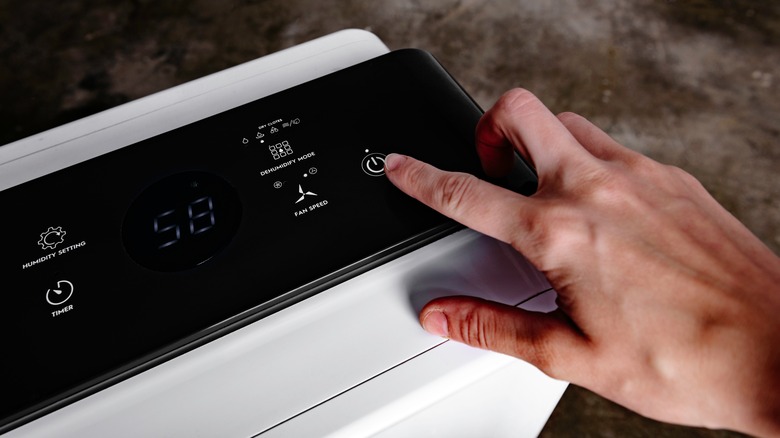What To Do If You Notice Green Algae Growing In Your Water Filter
We may receive a commission on purchases made from links.
People invest in water filters for their homes to give them peace of mind over their water supply. A whole house water filter is installed at the main water line, which means that all of the water pumped into your house is filtered and cleaned. Not only do you get clean drinking water, but you also get filtered water flowing through your faucets, showers, and into your appliances. But every now and again, problems can arise with your filtration system. It's possible to find algae growing in your water filter, which can contaminate your supply. When you find this happening, you will need to clean out the algae, sanitize the system, and change the conditions your filter is in to ensure it doesn't happen again.
Not only does it look unsanitary to have green microorganisms taking over your whole house water filter, but it can also damage your system if it's not treated quickly. The algae can multiply and end up clogging the filter itself, which will make it less effective at removing hard minerals and contaminants from the main water line. Plus, if you let the problem persist for too long, it will only become harder to remove all of the algae, which can lead to expensive maintenance bills if you need to call in a professional to eradicate it for you. So let's not waste time — here's how to remove algae from your water filter.
How to clean out the algae and sanitize the system
The first step to remedy this problem is to clean out the filter itself. To do so, take apart the system, separating all its components and filters. If you're unsure how to do so, read your system's instruction manual beforehand to ensure you don't break any parts. Then, using warm water and your favorite dish soap, gently wash each item, removing any trace of the green organisms. However, do not use soap on the filters or cartridges themselves. If the algae can't be removed with warm water, you will need to replace them with new ones instead. Make sure to rinse all the pieces thoroughly.
Then, to sanitize the pieces, you will need to rinse them with chlorine bleach. This will blast any remaining algae that you missed or couldn't see. To properly sanitize, mix 1 gallon of water with 3 teaspoons of bleach. Wash each component once again with the diluted bleach solution, then rinse them thoroughly with clean water. Finally, allow them to air dry before piecing the components back together.
Change the filter's conditions
To ensure the algae doesn't come back in a few weeks and force you to clean the system all over again, you have to change the conditions that allowed it to grow in your tank in the first place. Algae thrive in strong sunlight, especially when they get over 10 hours of rays per day. To combat their proliferation, ensure that natural light is limited in the space. If it's not, install a cover over your system. If you want to buy a specialized product, you will have to find a sleeve or cover that is compatible with your system's brand. For example, the Rusco Sun Shield is recommended for Rusco systems, which you can get on Amazon for $10. But the HydroLogic Housing Sleeve is best for Stealth RO and Small Boy systems.
You also want to ensure it's not humid where your system is located, which also encourages algae growth. If it is, combat those conditions with the help of fans or a dehumidifier. Fans will help circulate the air, keeping the temperature under control in the room. A dehumidifier will suck out the extra moisture from the air, making the conditions drier in the room. You can also look for any holes near windows or the foundation, which can contribute to humid indoor environments. Once you change these conditions, your algae problem should begin to clear up.


